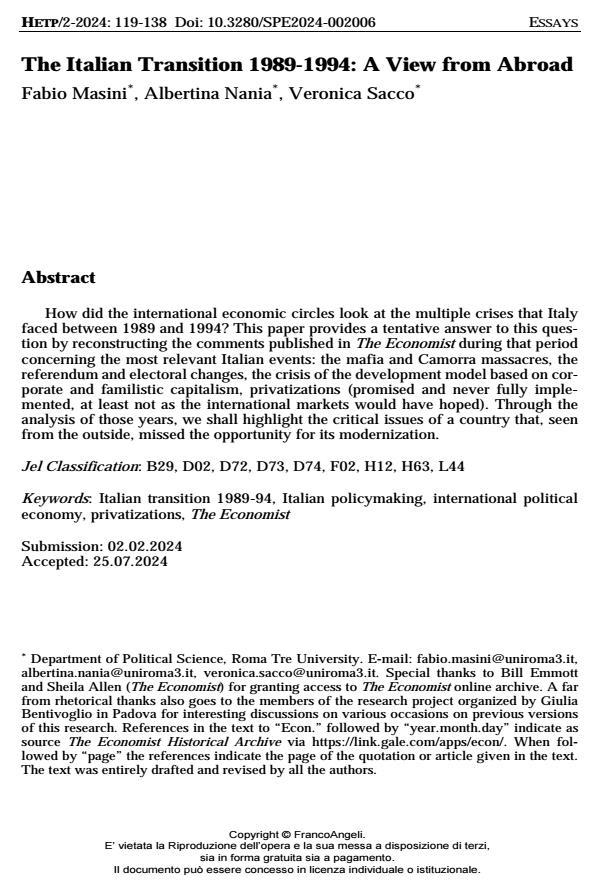The Italian Transition 1989-1994: A View from Abroad
Titolo Rivista HISTORY OF ECONOMIC THOUGHT AND POLICY
Autori/Curatori Fabio Masini, Albertina Nania, Veronica Sacco
Anno di pubblicazione 2025 Fascicolo 2024/2
Lingua Inglese Numero pagine 20 P. 119-138 Dimensione file 83 KB
DOI 10.3280/SPE2024-002006
Il DOI è il codice a barre della proprietà intellettuale: per saperne di più
clicca qui
Qui sotto puoi vedere in anteprima la prima pagina di questo articolo.
Se questo articolo ti interessa, lo puoi acquistare (e scaricare in formato pdf) seguendo le facili indicazioni per acquistare il download credit. Acquista Download Credits per scaricare questo Articolo in formato PDF

FrancoAngeli è membro della Publishers International Linking Association, Inc (PILA)associazione indipendente e non profit per facilitare (attraverso i servizi tecnologici implementati da CrossRef.org) l’accesso degli studiosi ai contenuti digitali nelle pubblicazioni professionali e scientifiche
How did the international economic circles look at the multiple crises that Italy faced between 1989 and 1994? This paper provides a tentative answer to this question by reconstructing the comments published in The Economist during that period concerning the most relevant Italian events: the mafia and Camorra massacres, the referendum and electoral changes, the crisis of the development model based on corporate and familistic capitalism, privatizations (promised and never fully implemented, at least not as the international markets would have hoped). Through the analysis of those years, we shall highlight the critical issues of a country that, seen from the outside, missed the opportunity for its modernization.
Parole chiave:Italian transition 1989-94, Italian policymaking, international political economy, privatizations, The Economist
Jel codes:B29, D02, D72, D73, D74, F02, H12, H63, L44
Fabio Masini, Albertina Nania, Veronica Sacco, The Italian Transition 1989-1994: A View from Abroad in "HISTORY OF ECONOMIC THOUGHT AND POLICY" 2/2024, pp 119-138, DOI: 10.3280/SPE2024-002006